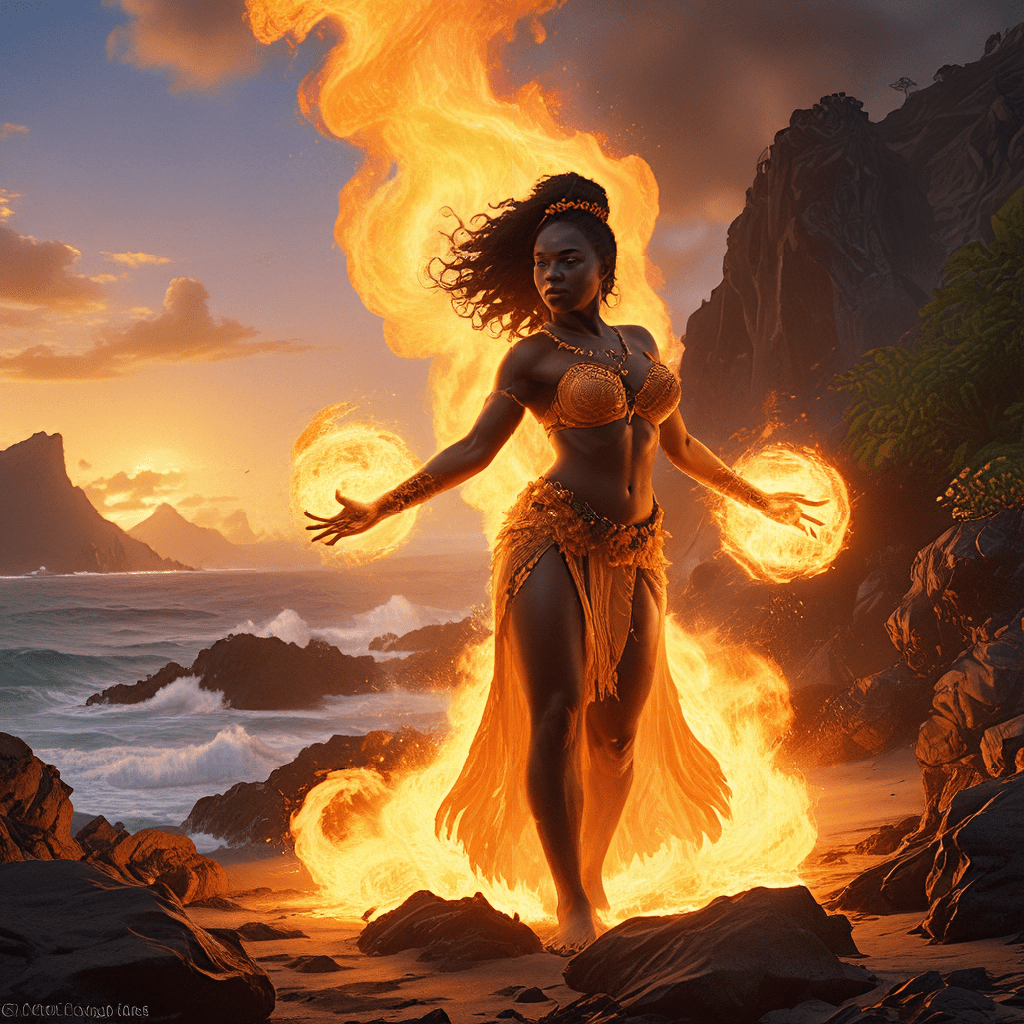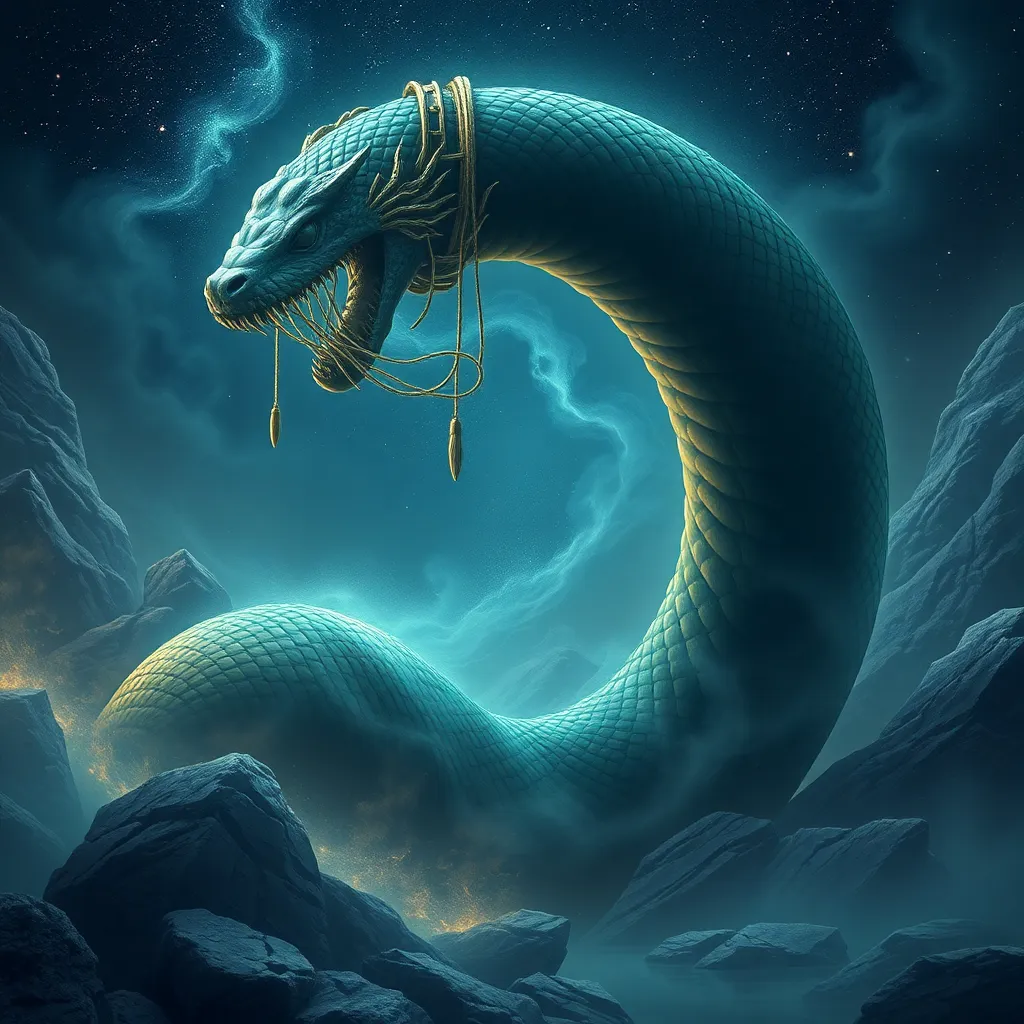Pele: The Fiery Heart of Hawaiian Mythology
Pele, the Hawaiian goddess of fire, volcanoes, and lava, is a central figure in Polynesian mythology, embodying the raw power and unpredictable nature of the islands she calls home. Her legend is woven into the very fabric of Hawaiian culture, shaping the beliefs, traditions, and landscape of the archipelago. From ancient chants to modern-day folklore, Pele's story continues to captivate and inspire.
The Genesis of Pele: From Volcanic Origins to Divine Power
Legend has it that Pele was born from the union of Haumea, the goddess of fertility and creation, and Kane Milohai, the god of the ocean. Pele's fiery nature was evident from the start. Born in the distant Polynesian island of Tahiti, she was driven from her home by her jealous sister, Hi'iaka, a powerful sorceress. This exile led Pele to the volcanic islands of Hawai'i, where she found a new home and became forever intertwined with the land. Her arrival marked the birth of the volcanic activity that continues to shape the islands to this day.
Pele's volcanic origins are not just a myth; they are a reflection of the geological reality of Hawaii. The Hawaiian islands are formed by a chain of volcanic hotspots, where molten rock rises from the earth's mantle, creating new land. This process is a constant reminder of the power and dynamism of the natural world, mirroring Pele's fiery and ever-changing nature.
Pele's Fiery Domain: The Volcanoes of Hawai'i
The Hawaiian volcanoes are not just geological formations; they are sacred places, imbued with the spirit of Pele. Each volcano is associated with a specific aspect of Pele's personality and power. For example, Kilauea, one of the most active volcanoes in the world, is known for its flowing lava and is considered Pele's most powerful manifestation. Mauna Kea, the tallest mountain in the world when measured from its base on the ocean floor, is associated with Pele's gentler side, representing her connection to the sky and the heavens.
Pele's volcanic domain extends beyond the physical landscape. Her presence is felt in the hot springs, the geothermal vents, and the volcanic ash that nourishes the land. The air itself seems to crackle with her energy, reminding the people of Hawai'i of the power and presence of their fiery goddess.
Fire and Fury: Pele's Powers and Prowess
Pele is more than just a goddess of fire; she is a force of nature, capable of both creation and destruction. Her powers are vast and varied, reflecting the unpredictable nature of volcanic activity. She can control lava flows, create new land, and unleash devastating eruptions. Her fiery breath can consume entire forests, while her tears can quench the thirst of the parched land.
Pele’s strength and abilities are not merely physical. She is a powerful sorceress, able to manipulate the elements and influence the fates of mortals. She is known for her jealous nature and her fierce protection of her domain. To challenge Pele's authority is to invite her wrath, a force that can be as destructive as the volcanoes she commands.
The Legacy of Pele: Shaping the Hawaiian Landscape
The Hawaiian landscape bears the unmistakable mark of Pele. From the jagged peaks of Mauna Loa to the black sand beaches of Punalu'u, every aspect of the islands reflects the power and presence of the fire goddess. The volcanic soil, rich in minerals, supports a unique and diverse ecosystem. The lava flows, while destructive in the short term, create new land and reshape the coastline, providing a constant reminder of the dynamic nature of the islands.
Pele's legacy is more than just geological; it is woven into the very soul of the Hawaiian people. Their traditions, their myths, and their understanding of the natural world are all shaped by the legend of their fierce and powerful goddess.
Pele's Jealousy and Wrath: A Force of Nature and Human Emotion
Pele is renowned for her fiery temper, reflected in the volcanic activity she commands. Her jealousy is a recurring theme in Hawaiian myths, often stemming from her love affairs and the constant threat of rivals. Pele's wrath is as unpredictable as the volcanoes she embodies, and those who cross her path often suffer the consequences of her fiery fury.
One famous myth tells the story of Pele's rivalry with Hi'iaka, her sister, who was sent to retrieve the sacred feather cloak of Pele's lover, Lohi'au. This quest led to a series of trials and tribulations, ultimately resulting in a confrontation between the two sisters. Pele's jealousy and anger were so intense that she turned her fiery wrath on Hi'iaka, driving her away and demonstrating the power of her emotions.
Pele's volatile nature is a reminder that even the most powerful forces of nature can be influenced by human emotions. Her jealousy and wrath are not just mythical traits; they reflect the complexities of human relationships and the consequences of unchecked passion.
The Ever-Changing Forms of Pele: Volcano, Fire, and Human
Pele's mythical nature is multifaceted, embodying the dynamic essence of the volcanoes she represents. While she is primarily known as a fiery goddess, she can transform herself into various forms, reflecting her adaptability and the unpredictable nature of her power.
One of Pele's most common forms is that of a beautiful woman, often described as having dark skin, fiery red hair, and captivating eyes. This form allows her to interact with humans, engage in romantic relationships, and even disguise herself to observe the lives of mortals. Her human form highlights her connection to human emotions, particularly jealousy and wrath, which often drive her actions.
Pele also takes the form of a fiery spirit, a manifestation of her pure volcanic energy. In this form, she is a powerful force of nature, capable of unleashing catastrophic eruptions and shaping the landscape with her molten breath. The fiery spirit represents Pele's raw power and her ability to both create and destroy, embodying the relentless cycle of volcanic activity.
Furthermore, Pele can also take the form of animals, particularly birds, which symbolize her connection to the sky and her ability to travel vast distances. Her transformation into birds allows her to observe her domain from a unique perspective and to connect with other deities and spirits.
These shifting forms showcase Pele's versatility and her ability to adapt to different situations. Her human form allows her to engage with mortals, while her fiery spirit embodies her destructive power, and her transformation into birds highlights her connection to the wider natural world. This ever-changing nature makes Pele a complex and fascinating deity, reflecting the multifaceted and dynamic nature of the volcanic islands she calls home.
Variations in Pele’s Myths: Adapting to Changing Times
Pele's story has evolved over time, reflecting the changing beliefs and cultural practices of the Hawaiian people. While the core elements of her legend remain, the details and interpretations have adapted to reflect the changing societal landscape and the influence of external cultures.
For example, early myths often portrayed Pele as a fierce and vengeful deity, her destructive power emphasizing the unpredictable nature of volcanic activity. This portrayal reflected the respect and fear that the ancient Hawaiians held for the forces of nature.
Later myths, influenced by contact with Western cultures, began to emphasize Pele's human side, showcasing her emotions, relationships, and interactions with mortals. This more nuanced interpretation reflected the growing understanding of the human impact on the environment and the need to establish a closer connection with the natural world.
Furthermore, the specific attributes associated with Pele have also evolved over time. While her fiery nature remains constant, the details of her powers, her relationships, and her interactions with other deities have been adapted and embellished by different generations. This adaptability ensures that Pele's legend remains relevant and meaningful to the Hawaiian people, reflecting their evolving understanding of the world around them.
Theories on Pele’s Origin: Mythological Interpretations of Volcanic Activity
Pele's origins, like many mythological figures, are shrouded in mystery and symbolism. Her story reflects the Hawaiian people's deep understanding of the natural world and their attempts to explain the awe-inspiring phenomena of volcanic activity.
One theory suggests that Pele's story is a metaphorical interpretation of the geological processes that created the Hawaiian islands. The volcanic hotspots that formed the islands are often depicted as "breathing" or "expelling" molten rock from the earth's mantle, mirroring Pele's fiery nature and her ability to create new land. The constant volcanic activity, like Pele's unpredictable temperament, represents the dynamism and power of the natural world.
Another theory suggests that Pele's story is a way of explaining the destructive power of volcanic eruptions. The ancient Hawaiians witnessed first-hand the devastating consequences of volcanic activity, and they needed a way to understand and reconcile this destructive force with their beliefs about the natural world. Pele's story, with her fiery wrath and unpredictable behavior, provides a mythological framework for understanding and coping with the fear and awe inspired by volcanic eruptions.
Ultimately, the origin of Pele's story is open to interpretation. However, it is clear that her legend reflects the deep connection that the Hawaiian people have with their volcanic landscape and their understanding of the forces that shape their world.
Pele’s Influence on Hawaiian Culture: From Folklore to Modern Life
Pele's legend continues to resonate deeply within Hawaiian culture, impacting everything from folklore and art to everyday life and beliefs. Her presence is felt in traditional chants, songs, and dances, where her fiery spirit is celebrated and revered.
Her legacy is evident in the names of places, with numerous locations across the islands named after her or her exploits. The volcanic landscape itself is considered sacred, with a deep-rooted respect for Pele's power and influence.
Pele's impact extends beyond traditional practices, influencing modern art, literature, and music. Artists, writers, and musicians draw inspiration from her fiery nature, her complex emotions, and her intricate relationship with the natural world. Her story inspires new interpretations and perspectives on the relationship between humans and the environment.
Even in everyday life, Pele's influence is felt. The unpredictable nature of volcanic activity serves as a constant reminder of the power and unpredictability of the natural world, prompting a respect for the environment and a recognition of the need for responsible stewardship.
Pele's legend reminds the Hawaiian people of their deep connection to the land and serves as a reminder of the power and beauty of the natural world. Her story resonates with a timeless message about the cyclical nature of life, the importance of respecting the environment, and the enduring power of myths and legends in shaping cultural identity.
FAQ
- What are Pele's main powers? Pele's powers include controlling lava flows, creating new land, unleashing devastating eruptions, and manipulating the elements. She is also a sorceress capable of influencing the fates of mortals.
- Why is Pele's jealousy important in her story? Pele's jealousy highlights a human aspect of her, showing that even a powerful deity can be influenced by emotions. It also adds drama and conflict to her story.
- How has Pele's influence changed over time? Early myths emphasized Pele's destructive power, reflecting the Hawaiians' fear of volcanic activity. Later myths focused more on her human side, reflecting a growing understanding of the environment.
- What are some examples of Pele's influence on Hawaiian culture? Pele's influence is seen in names of places, traditional art forms, and the reverence for the volcanic landscape.
- Is Pele actually a real person or just a myth? Pele is a mythological figure, but her story reflects the Hawaiians' understanding of the natural world and their need to explain volcanic activity.
- How does Pele's story relate to the natural world? Pele represents the power, beauty, and unpredictability of volcanoes. Her story is a way to understand and respect the forces that shape the Hawaiian islands.



